I DENTITY T HEFT
PROTECTING YOURSELF FROM
AN UNPROTECTED WORLD
ETHAN POPE
M OODY P UBLISHERS
CHICAGO
2006 by
E THAN P OPE
All rights reserved. No part of this book may be reproduced in any form without permission in writing from the publisher, except in the case of brief quotations embodied in critical articles or reviews.
All Scripture quotations, unless otherwise indicated, are taken from the New American Standard Bible, Copyright 1960, 1962, 1963, 1968, 1971, 1972, 1973, 1975, 1977, 1995 by The Lockman Foundation. Used by permission.
Scripture quotations marked NLT are taken from the Holy Bible, New Living Translation, copyright 1996. Used by permission of Tyndale House Publishers, Inc., Wheaton Illinois 60189. All rights reserved.
Certified Financial Planner Board of Standards Inc. owns the certification mark C ERTIFIED F INANCIAL L ANNER TM , which it awards to individuals who successfully complete the CFP Boards initial and ongoing certification requirements.
This book is not intended to give SPECIFIC legal, tax, or investment counsel. Its purpose is to give general insights in the area of personal money management and identity theft prevention. Neither the author nor the publisher can take responsibility for the readers decisions based on the information provided in this book. Due to changing technology and laws, it is recommended that you seek professional counsel for your individual circumstances.
Cover Design: DesignWorks Group Inc.
Cover Image: Tim Green
Editor: Jim Vincent
Library of Congress Cataloging-in-Publication Data
Pope, Ethan.
Identity theft : protecting yourself from an unprotected world / Ethan Pope.
p. cm.
Includes bibliographical references.
ISBN-13: 978-0-8024-0974-4
1. Identity theftUnited States. 2. Identity theftUnited StatesPrevention. I. Title.
HV6679.P67 2006
362.88dc22
2006006117
We hope you enjoy this book from Moody Publishers. Our goal is to provide high-quality, thought-provoking books and products that connect truth to your real needs and challenges. For more information on other books and products written and produced from a biblical perspective, go to www.moodypublishers.com or write to:
Moody Publishers
820 N. LaSalle Boulevard
Chicago, IL 60610
ISBN: 0-8024-0974-1
ISBN-13: 978-0-8024-0974-4
1 3 5 7 9 10 8 6 4 2
Printed in the United States of America
It is a federal crime when someone:
knowingly transfers or uses, without lawful authority, a means of identification of another person with the intent to commit, or to aid or abet, any unlawful activity that constitutes a violation of Federal law, or that constitutes a felony under any applicable State or local law.
The Identity Theft and Assumption Deterrence Act (1998) 18 U.S.C. 1028(a)(7)
QUICK FACTS
Identity theft is one of the fastest growing crimes in America and the top reported fraud of 2005.
80%: Americans who are concerned about identity theft.
10 million: Estimated number of Americans affected by ID thefts each year.
$50 billion: Dollars that FTC estimates are lost annually as a result of identity theft.
50 million: People at risk due to data being lost or stolen or misplaced by corporations.
175 hours and $800: The time and cost, on average, for each victim of ID theft to clear his or her name.
Sources: Federal Trade CommissionIdentity Theft Survey Report; USA Today,www.usatoday.com/money/industries/technology/2005-03-02-datathieves-usat_x.htm; Money magazine, August 2005, 27; Identity Theft Survival Guide, CNNMoney, www.money.cnn.com/2002/04/03/pf/q_identity/index.htm.
Contents
Quick Evaluation: High-Risk Profile
for Potential Identity Theft
Go ahead. Take this test right now!
Introduction: The Alert
How safe is your good name?
1. Top Ten Scams
What should you be on the alert for?
2. The Shock
What really happens when your identity is stolen?
3. The Theft
How can someone steal your identity?
4. Prevention
What can you be doing to protect your good name?
5. More Prevention
How can you protect your checking account,
credit cards, and other personal information?
6. Still More Prevention
What outside resources can you use to protect yourself?
7. The Recovery
How do you report ID theft and reclaim your good name?
8. The Solutions
Is there anything the government or businesses can do?
9. Helpful Resources
Where can I learn more?
Acknowledgments
T HANK Y OU
to everyone at Moody Publishers who continues to work on the Financial Alert Series. Its hard to believe this is already book number three in the series. Its an honor to be on the same team with you. My special thanks to Greg Thornton for your ongoing commitment to this series; to Janis Backing for publicity; to John Hinkley for marketing; and to Jim Vincent, my editor, for helping to make this book the best it could be; I know the readers will appreciate your polishing skills.
to Judy for being so vulnerable in explaining what its like being a victim of identity theft. (Her story appears in .) I learned more from listening to you than from the hundreds of articles I read on the topic.
to Tim Starling for meticulously reading the manuscript for computer, Internet, and technical accuracy. I appreciate your expertise in this area.
to Brian Houston, not only for reading the manuscript and providing me with great suggestions, but for your contagious enthusiasm for this project.
to Janet:Its great to be identified as your husband.
to Natalie and Austin:I love being identified as Dad.
QUICK EVALUATION
High Risk Profile for Potential Identity Theft
Put a checkmark in the box before each statement listed below that is true for you.
 I have family, friends, neighbors, or associates who are in some type of trouble.
I have family, friends, neighbors, or associates who are in some type of trouble.
If you have any family members, friends, neighbors, or work associates who you know are always in financial trouble, unemployed, addicted to drugs, or have filed for bankruptcy recentlyyour level of risk has greatly increased. It has been documented that 50 percent of identity thefts (when the person can be identified) are committed by a family member, neighbor, friend, or work associate. If the person has access to your personal data, your level of risk for identity theft is higher than normal.
 I have responded to an e-mail requesting personal data.
I have responded to an e-mail requesting personal data.
If you have responded to an e-mail supposedly from your bank, investment company, credit card company, PayPal, or eBay providing a link for you to click on that takes you to a Web site requesting personal data such as your name, address, date of birth, and Social Security numberyour level of risk has greatly increased. Now the thief has everything he/she needs to open credit card accounts, obtain loans, and eventually harm your good name.


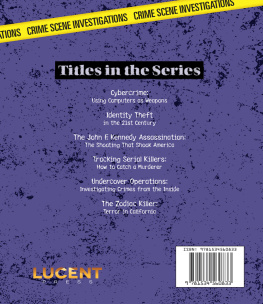
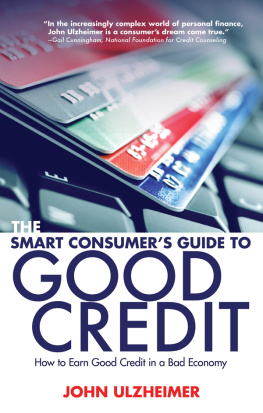

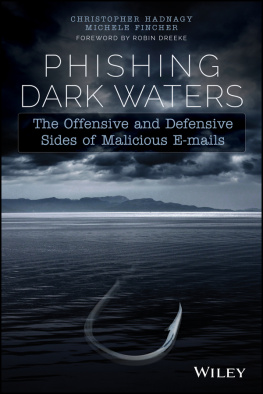

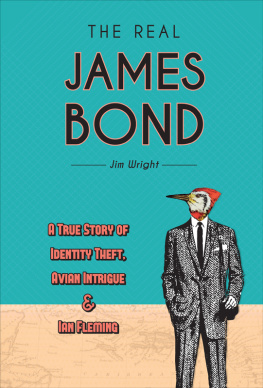
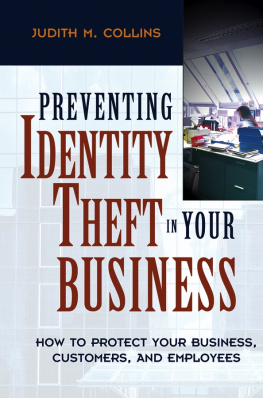
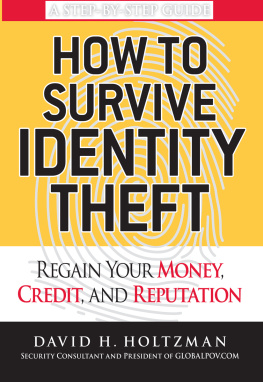
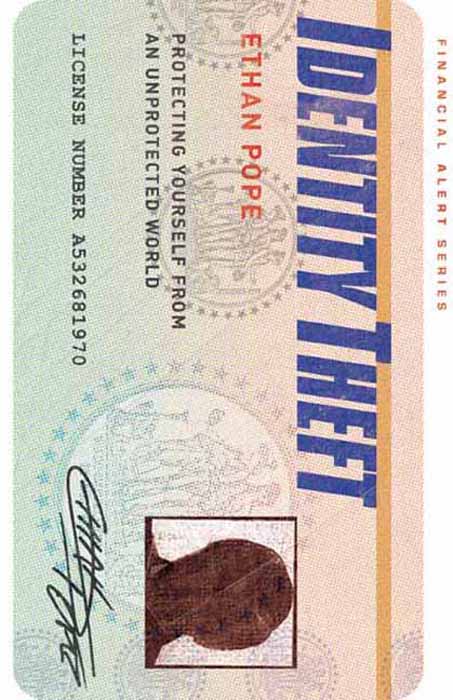
 I have family, friends, neighbors, or associates who are in some type of trouble.
I have family, friends, neighbors, or associates who are in some type of trouble.